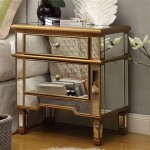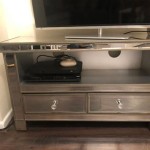Framing Mirrors With Crown Molding
Adding crown molding to a mirror elevates its appearance, transforming it from a simple reflective surface into a statement piece. This project, achievable with basic DIY skills, significantly enhances a room's aesthetic. The following guide outlines the process and considerations for successfully framing a mirror with crown molding.
Choosing the Right Materials
Material selection is crucial for both aesthetics and practicality. For the molding itself, various options exist, including wood, MDF (medium-density fiberboard), and polyurethane. Wood offers a classic, high-end look but requires more precise cutting and installation. MDF is a cost-effective and readily available alternative, offering a smooth surface ideal for painting. Polyurethane is lightweight and moisture-resistant, making it suitable for bathrooms and other humid environments. Consider the mirror's existing frame, the surrounding décor, and the room's overall style when choosing a material.
Adhesive selection is equally important. Construction adhesive provides a strong bond for wood and MDF moldings. For polyurethane, a specialized adhesive designed for plastics is recommended. Mirror mastic, a type of adhesive specifically formulated for mirrors, can also be used, particularly when bonding directly to the mirror's surface. Always ensure the chosen adhesive is compatible with both the molding and the mirror or its frame.
Preparing the Mirror and Molding
Proper preparation is essential for a seamless finish. Begin by carefully cleaning the mirror's surface with a glass cleaner to ensure optimal adhesion. If the mirror has an existing frame, ensure it is clean and free of any loose debris. Measure the mirror precisely to determine the required length of molding. Accurate measurements will minimize waste and ensure a professional result.
Cutting the molding accurately is a critical step. Use a miter saw to achieve precise angled cuts for the corners. For outside corners, the molding pieces are mitered at a 45-degree angle, while inside corners require a reverse 45-degree angle. A coping saw can be used to refine the inside corner joints, ensuring a tight fit. Test fit the pieces before applying adhesive to confirm accurate measurements and cuts. Slight adjustments can be made with sandpaper if necessary.
Attaching the Molding
Once the molding is cut and fitted, the application process can begin. Apply a consistent bead of adhesive to the back of the molding, ensuring full coverage along the edges that will contact the mirror or its frame. Carefully position the first piece of molding onto the mirror, pressing firmly to ensure a strong bond. Support the molding with painter's tape until the adhesive sets.
Continue attaching the remaining pieces, ensuring tight joints at the corners. Wipe away any excess adhesive immediately with a damp cloth. Once all pieces are in place, allow the adhesive to fully cure according to the manufacturer's instructions. This typically takes several hours, but it's essential to allow sufficient time for a secure bond.
Finishing Touches
After the adhesive has cured, the finishing touches complete the project. Caulk can be applied to fill any small gaps or imperfections at the joints, creating a seamless and professional look. Once the caulk is dry, the molding can be painted or stained to complement the surrounding décor. A primer may be necessary, especially for MDF molding, to ensure even paint coverage.
Considerations for Different Mirror Types
Framing a frameless mirror requires attaching the molding directly to the mirror's surface. Use mirror mastic for this purpose, applying it in a consistent bead around the perimeter of the mirror. Ensure the mirror is clean and free of any residue before applying the adhesive. With framed mirrors, the molding can be attached to the existing frame, offering a greater surface area for adhesion.
Safety Precautions
When working with cutting tools like miter saws and coping saws, always wear appropriate safety glasses. Gloves can also protect hands from adhesive and splinters. Ensure adequate ventilation when working with adhesives and paints. Following these safety precautions will help ensure a safe and successful project.

Bathroom Mirror Framed With Crown Molding Large Mirrors Frame Makeover

Bathroom Mirror Framed With Crown Molding Frame Mirrors Diy Large

Mirror Molding Framing A With Crown Mirrormate
How To Upgrade Your Builder Grade Mirror Frame It

Crafty Again

Love This Mirror Idea Budget Bathroom Remodel Bathrooms
How To Upgrade Your Builder Grade Mirror Frame It

Custom Made Mirror Frame Wooden Dressing Crown Molding

Crafty Again

How To Frame A Bathroom Mirror Nest For Less








